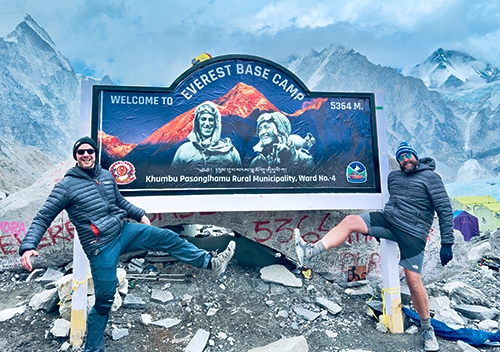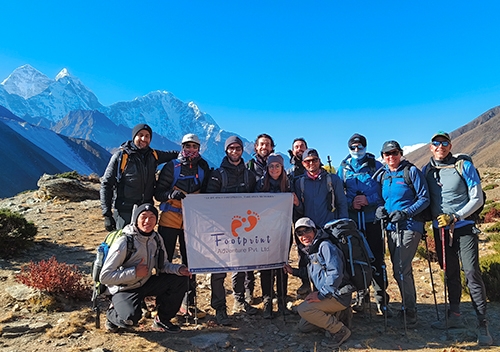Why is Preparation Essential Before the Everest Base Camp Trek?
It is very important to be well prepared for the Everest Base Camp trek in order to do it safely and with confidence. A lot of trekkers underestimate the high altitude, the long walking days, along the unpredictable weather that can happen in the Himalayas. Unfortunately, some neglect the necessary preparation and end up getting sick or exhausted, forcing them to return before reaching the base camp.
Typically, the trek takes about 12 to 15 days, depending on the itinerary, with 5 and 6 hours of daily climbing on steep and diverse mountain trails, up to 5,364 meters. Establishing your endurance, strength, and cardiac fitness will give a better chance for your body to cope with the strenuous nature of the trek and decrease risk for muscle cramps, fatigue, and altitude sickness. Trekking will typically be accompanied by limited internet access, which means you often do get a chance to disconnect from the rest of the world for many days at a time. Without preparation, it can be challenging to cope with the physical and mental strain of the trek. Proper preparation allows your body to acclimatize to the altitude, establish a steady pace, and recover more efficiently. You can enjoy the breathtaking Himalayan views without impacting your health or focus.
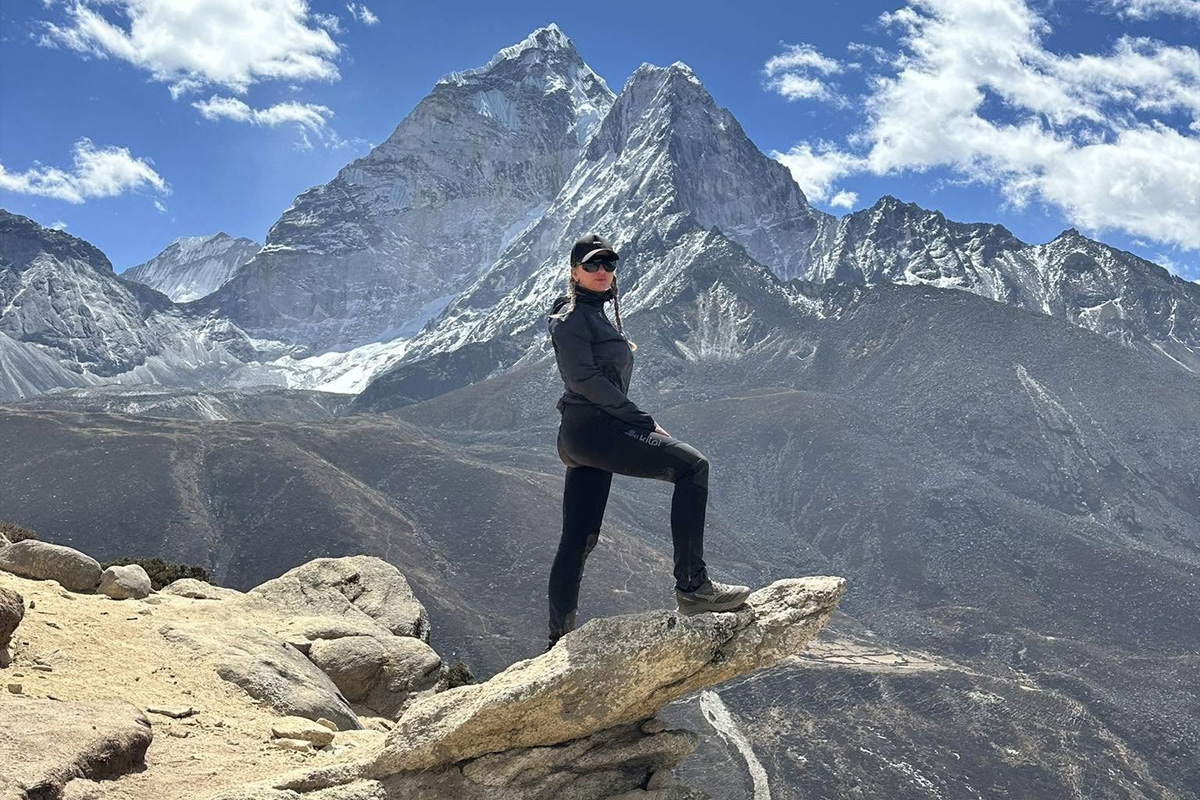
How Difficult is the Everest Base Camp Trek?
The difficulty level of the Everest Base Camp trek is usually considered a moderate to challenging trek. It does not involve technical climbing skills, although long walking days, high altitude, and changing climate do require physical capability. You will walk for several hours each day on steep and rocky terrain, usually above 3,000 meters.
However, the level of difficulty mostly depends on how fit you are for the trek. For instance, regular exercise, such as walking, running, or hiking before your trip, can help build the stamina and strength you’ll need. Proper acclimatization, staying hydrated, and maintaining a steady pace also make a big difference. If you are fit, mentally prepared, and take enough time to adjust to the altitude, the trek is achievable for most people.
How To Train for the Everest Base Camp Trek?
What is the Fitness Level Required for the Everest Base Camp Trek?
You will require a moderate level of fitness for the Everest Base Camp trek. Trekkers should be able to walk for 6-8 hours each day on uneven terrain, often with a lightweight backpack. You will need to have a good amount of cardiovascular fitness to manage the long hours and reduced oxygen at high altitudes reaching over 5,300 meters. Therefore, your training for the Everest base camp trek will need to include building stamina through activities like running, walking, or cycling, and developing leg strength with squats and lunges.
While trek does not require technical skills, but does demand good health, endurance, and mental readiness to cope with high altitude and physical exertion. Practicing on inclined trails or treadmills would be beneficial to mimic the trekking conditions. Learning how to pace yourself is essential, along with adequate hydration and breaks will also increase your chances of successfully completing this trek.
What Are the Best Training Exercises for the Everest Trek?
To trek to Everest Base Camp, you need to begin your training at least 4–6 months in advance. As a general rule, your training should include exercises that develop strength, endurance, and lung capacity. Below are the best exercises to train for the Everest Base Camp:
Hiking and Walking
Walking and hiking are the foundation of trek training. Begin with regular walks on flat terrain or slight hills to develop stamina. As your muscles and endurance improve, progress to longer hikes, incorporating uphill and downhill hiking to strengthen and develop leg muscles and balance. Carry a small weight in a backpack to adapt your body to the load you’ll carry, preparing for hours on uneven terrain during the trek. If possible, do several practice hikes at higher altitudes to help acclimatize your body to thin air.
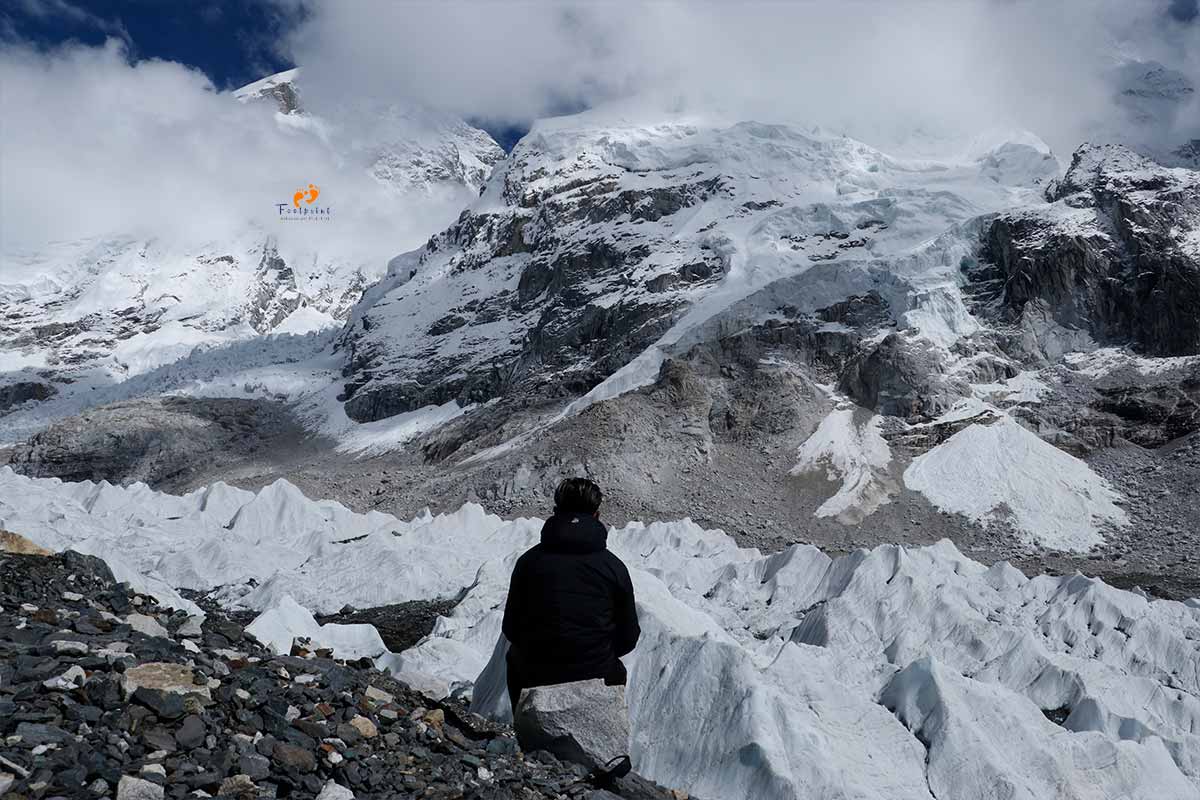
Stair Climbing and Incline Treadmill
Regularly using stairs will strengthen your legs and enhance your endurance. This exercise mimics the uphill trekking motion and will allow your muscles to effectively adapt to the climbing motion repetitively. You can add a challenge with a lightweight backpack. Eventually, stair climbing will make any steep trail feel much easier and will improve your lung capacity when trekking at high altitude.
Leg Strength Exercises
It is necessary to have strong legs for long walks. Squats, lunges, step-ups, and wall sits focus on your thighs, glutes, and calves to build power and stability. Squats will help you with leg strength, lunges will improve your balance, step-ups simulate trekking movements, and wall sits will give you endurance. If you do these exercises consistently, your legs will be able to withstand the demands of long days on rocky trails without fatigue.
Cardio Training
Cardio workouts increase your heart and lung capacity, an essential requirement for trekking at altitude. Whether it is running, cycling, or swimming, exercising three to four times a week will increase your stamina so that you can walk for longer without feeling tired. Also, using interval training will further help your cardiovascular system. Interval training requires short periods of high-intensity exercise, followed by a rest period. This may also increase your ability to hike steep trails or any trails that are more difficult.
Core Strengthening
Having a strong core gives you better balance on uneven terrain and protects against injuries. Planks, sit-ups, and mountain climbers are great for developing your abdominal and lower back strength. Yoga and Pilates are also safe and effective ways to gain core strength while improving flexibility and posture, all of which contribute to easier trekking.
Flexibility and Mobility
Flexibility helps avoid injuries and reduce soreness. Daily stretching of your body, especially the legs, hips, and lower back, ensures that your muscles stay long and loose. Gentle yoga helps improve mobility, balance, and mental focus, allowing for a smoother experience traveling across rocky or uneven terrain on the trip to Everest Base Camp. With our package, EBC Yoga Trek, you can add both daily yoga and your trekking practice, which supports your body and mind to remain strong, flexible, and ready for activities at altitude.
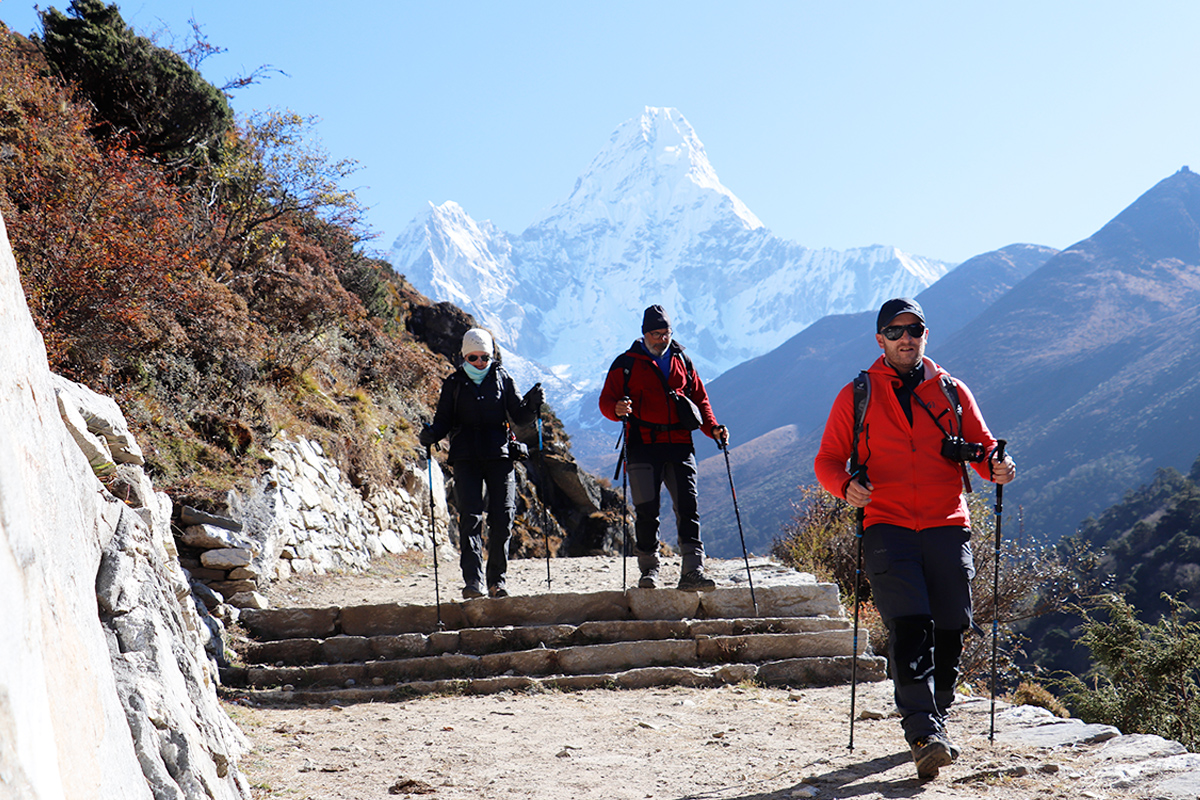
How to Build Strength and Endurance for High Altitude Trekking
Building strength and endurance is key to successful high-altitude trekking, such as at Everest Base Camp and the Annapurna Circuit, because each trek includes hours of walking on steep and uneven trails, often over 3,000 meters above sea level, where available oxygen is less than at sea level. Getting your body used to regular hiking before your trip gives your body time to adjust and makes your trek more comfortable and safe.
Beneficial training exercises for the Everest trek and other high-altitude routes include hiking on local trails, stair climbing, squats, lunges, and step-ups, which strengthen the leg muscles needed for long uphill and downhill walks and improve coordination and balance. Aerobic training such as jogging, biking, and brisk walking will build lung capacity and stamina - both useful for high-elevation trekking. Getting your body weighted down with a backpack while you practice walking prepares your body for carrying gear on your trek.
In addition to building strength, implementing Everest Base Camp acclimatization tips is important. This includes gradually increasing altitude, rest days in places like Namche Bazaar and Dingboche, walking at a slow pace, and staying well hydrated to help their bodies adjust to the thinner air.
Acclimatization Tips for Everest Base Camp Trek
What is Acclimitization and Why does it matter?
Acclimatization is the process by which your body gradually adapts to the lower oxygen levels at high altitudes. As you go higher, the air becomes thinner, and your body gets less oxygen than it does at lower elevations. To handle this change, your body needs time to adjust by increasing red blood cell production, breathing rate, and oxygen use.
Acclimatization becomes important above 2,500 meters (8,200 feet), where the risk of Acute Mountain Sickness (AMS) starts. Common symptoms include headache, dizziness, nausea, and fatigue. These symptoms usually happen when you ascend too quickly without giving your body enough time to adjust.
During the Everest Base Camp (EBC) trek, there are days designated for acclimatization to allow the trekkers to remain healthy and strong during the trek. The two major acclimatization stops are at Namche Bazaar (3,440 m) and Dingboche (4,410 m). On these acclimatization days, the trekkers follow the rule of "climb high, sleep low," which means walking up to a higher elevation during the day but returning to sleep at a lower elevation. "Climb high, sleep low" is a proven measure that assists your body in acclimatizing efficiently and reduces the chances of altitude sickness, making your trip to Everest Base Camp a safer and more enjoyable one.
How to Prevent Altitude Sickness on the Everest Base Camp Trek
In order to avoid altitude sickness, it is important to understand how to prepare for the Everest Base Camp trek. This trek reaches over 5,000 meters, where there is considerably less oxygen to breathe. Generally, when you are over 2,500 meters, you can experience Acute Mountain Sickness (AMS). Symptoms include headache, loss of appetite, dizziness, nausea, and fatigue. These symptoms occur when your body has not acclimatized to the altitude yet.
Acclimatization is essential to avoid altitude sickness. Acclimatization means that you are allowing your body time to adapt slowly to lower oxygen levels. Most trekking itineraries include a rest or acclimatization day somewhere on the trek. A good example of when to schedule acclimatization days would be when traveling through Namche Bazaar and Dingboche. On these scheduled days, you can do short walks uphill to slightly higher altitudes, but return to a lower altitude to sleep. This allows your body to acclimatize safely. Some additional helpful tips include walking at a steady pace, drinking plenty of water, preferably 3-4 liters per day, avoiding alcohol and smoking, and eating a lighter diet while taking in the right nutrition.
What to Pack for the Everest Base Camp Trek?
Having the right gear for your Everest Base Camp trek is essential for a comfortable and safe experience. When preparing for an immense trek like this, you will need clothing that will keep you warm, dry, and relaxed as the weather changes. You will want to pack moisture-wicking base clothing, an insulating jacket (down, fleece), a waterproof and windproof outer layer, and a good pair of trekking pants. You will also want to pack thermal clothing for the cold nights. Also, as with any cold trek, you will need warm gloves and a warm hat. Along with good sunglasses to protect your eyes from the bright sun, snow, and wind.
Good footwear is just as essential as good clothing. You will want to bring a sturdy, waterproof pair of trekking boots that fit well and are broken in. Make sure you pack a few pairs of warm socks to wear too. A pair of lightweight shoes or sandals will be useful for the evening when staying in the teahouse.
You’ll also need a comfortable backpack (around 30–40L) for daily essentials and a duffel bag for your porter if you have one. Include a water bottle or hydration bladder, a sleeping bag rated for sub-zero temperatures, trekking poles, a headlamp, sunscreen, lip balm, and a basic first aid kit. For a detailed packing checklist, read the full guide here on what to pack for the Everest base camp trek.
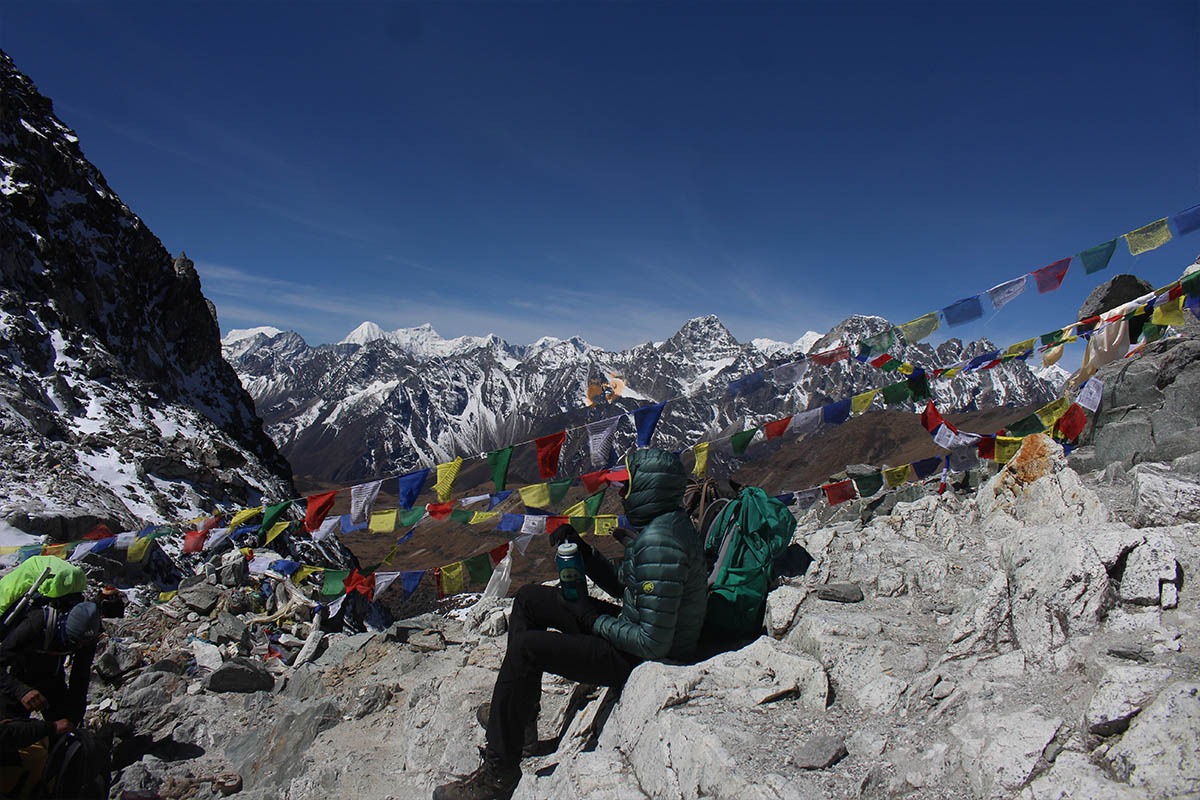
How to Mentally Prepare for the Everest Base Camp Trek
What Mindset Do You Need for the EBC Trek?
Trekking to Everest Base Camp will require you to have a calm and patient mentality and a determined mindset. It is not just a physically challenging trek, but a mentally challenging trek as well. You will be walking several hours each day, travelling on steep trails and altitudes where the air becomes thinner, and it gets harder to breathe. Maintaining a positive mindset during these times and a focused attitude, even when you are tired or fatigued, is essential.
Once you reach Namche Bazaar, the network may become sporadic, and you could be disconnected from your family and friends for up to several days. It can be difficult psychologically at first, but it does allow you some time to disconnect from daily life and experience the mountains. Being mentally prepared to be mentally 'unplugged' from technology can help keep you calm and in the moment.
Accept that progress will be slow at higher altitudes and that rest days are part of the journey. Stay flexible, respect your limits, and focus on enjoying the experience rather than rushing to the destination. A strong mindset will help you complete the trek safely and with confidence.
How to Stay Motivated and Positive During the Trek
The pathway to motivation usually starts with small victories. Break your journey into daily accomplishments, such as reaching the next town, walking across a suspension bridge, or simply admiring the view of a new mountain. Celebrate these victories, as they can help you to reflect on how far you have come. Spend time with positive people. Trekking groups usually have positive encouragement and support to make the tough days easier.
Keep reminding yourself why you chose this adventure. It might be to see Mount Everest, to test your limits, or to experience the beauty of the Himalayas. Your mental strength grows when you stay present and appreciate the journey rather than only thinking about the destination.
Remember to take deep breaths, have a rest when you want, and drink plenty of water, as this will help keep your body and mind feeling fresh. Each and every step takes you closer to your goal, even if it isn't as fast as you wish. Keeping a positive attitude and purposefully moving forward will have you at Everest Base Camp.
Conclusion
Adequate preparation is necessary for an enjoyable and successful trek to Everest Base Camp. The trek consists of long days of walking and steep trails at high altitudes, so preparing your body for long hours of walking is essential. This means preparing the body physically through endurance training, strength training, and cardio training for trekking. Preparing your legs, core, and lungs should assist the body with the physical aspect of the trek and will assist you in limiting fatigue and injury.
Acclimatization and preventing altitude sickness are just as important. Allowing for rest days in places like Namche Bazaar and Dingboche, following the saying "climb high, sleep low," along with drinking water, all assist the body in acclimatization to the less dense air. Mental preparation is equally important. Having the ability to be patient, flexible, and positive, especially when understanding you are out of touch with all of the communication networks, will allow you to mentally focus on the journey. Breaking the trek into daily goals and celebrating milestones helps maintain motivation.
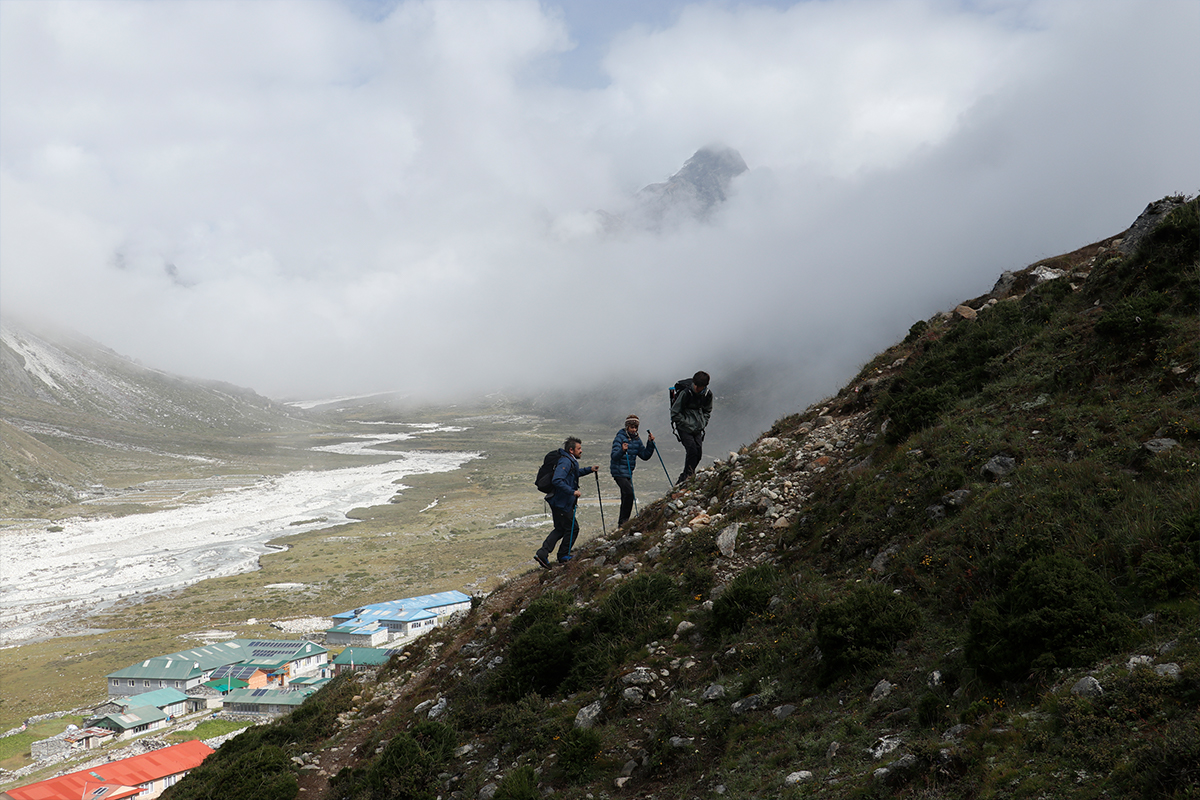
Packing the right clothing and gear ensures comfort and safety in changing Himalayan weather. Layered clothing, warm jackets, waterproof boots, and essential trekking equipment make a big difference.
With the right training, preparedness, and outlook, the Everest Base Camp Trek is attainable and an experience worth completing. For more guidance, training, and trek preparation questions, please contact Footprint Adventure and let us help make sure your trek is safe and memorable.
Frequently Asked Questions
What is the easiest way to train for high-altitude trekking?
The easiest way is to begin with regular walking or hiking on nearby trails. Simulating going uphill, stair climbing, and incline treadmill workouts helps. Above all, carry a small pack to acclimatize your body to carrying the weight you will when you trek. Prioritizing cardio exercises like running, biking, or swimming builds a baseline level of stamina and lung capacity that will be very helpful at high altitude.
How long should I train before the Everest Base Camp trek?
We often recommend a training period of at least 3 to 6 months prior to the trek. This gives your body time to gain endurance, leg strength, and cardiovascular fitness to facilitate your ability to walk all day and cope with high altitude.
What is the best diet before and during the trek?
Prior to your trek, eat a well-balanced diet that consists of complex carbohydrates, proteins, and healthy fats to create a proper energy base. During the trekking, include small, frequent meals, stay hydrated, and avoid alcohol and caffeine to the extent possible. In between meals, eat foods that are light but nutritionally rich and provide energy and recovery benefits for your body after long days of hiking.
Which gear and clothing are must-haves for Everest Base Camp?
Must have gear and clothing for the Everest base camp trek include sturdy boots for long days of hiking, layering materials, insulating jackets, waterproof clothing, thermal base layers, gloves, hats, sunglasses, sleeping bags, trekking poles, and a hydration system, as well as headlamps and sunscreen. Don't forget a first-aid kit, which is also important.
How many days should I plan for the Everest Base Camp trek?
The classic trek typically lasts between 12 and 15 days, with two acclimatization stops in Namche Bazaar and Dingboche. More time can be added for extra rest, sightseeing, or just for acclimatization.
Can anyone do the Everest Base Camp trek, or is it only for fit people?
The trek can be completed by anyone with a moderate fitness level, provided they prepare for the trek. While you do not require technical climbing ability, you do require sufficient endurance and stamina, and to become acclimatized properly. New hikers can certainly do the trek with a little training, pacing, and planning.
Is insurance necessary for the Everest Base Camp trek?
Yes, travel insurance is strongly recommended for the Everest Base Camp trek. Choose a plan that covers high-altitude trekking, emergency evacuation, medical treatment, and trip cancellations. Insurance ensures safety in case of accidents, altitude sickness, or unexpected delays.
What are the common mistakes people make while preparing for the EBC trek?
Common mistakes include underestimating altitude sickness, not training enough, carrying too much weight, ignoring acclimatization days, packing the wrong clothing, and not pacing themselves properly. Failing to stay hydrated or eat enough can also make the trek harder and increase fatigue.








